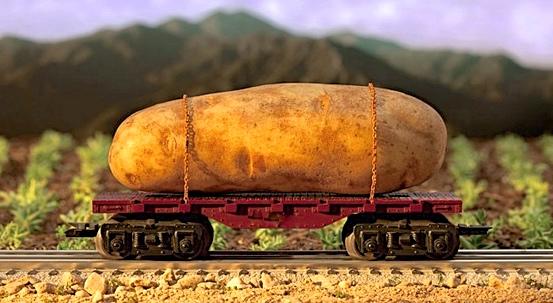One of the most common reasons consumers buy local food is to protect the environment. Often implicit in this rationale is the idea that eating local reduces one's carbon impact, and thus helps to slow climate change. The evidence for this seems pretty clear cut. The average food product travels more than 1,500 miles to reach on your plate. That transport, whether by boat, plane, train, or truck, emits pollution. So buying your food closer is almost always better. Right?
Wrong. Let's delve a little deeper.

1. Proponents of local food are absolutely correct in saying that closer production reduces the carbon impact of transportation, but transportation is not the only facet of food production that releases greenhouse gases, which contribute to climate change.
In fact, it's actually a pretty paltry one. Production accounts for the vast majority of agriculture's carbon footprint, while transport to the grocery store, and finally your table, accounts for less than a tenth! This value varies depending upon the foodstuff, ranging from a low of 1% for red meat to a high of 11% for fruits and vegetables.
2. This means that buying local really doesn't have much of an impact on climate change.
In fact, in a 2008 paper, Carnegie Mellon University's Christopher Weber and H. Scott Matthews calculated that if a family reduced all of their "food miles" to zero -- basically meaning they grew all of their own food in their kitchen (good luck with that mess) -- the reduction in carbon impact would be equal to driving a 25 mile per gallon car 1,000 miles less per year. The frugal SUV driver would be making a more eco-conscious sacrifice.

3. Considering that production accounts for such a significant chunk of the energy that goes into food, there are actually many circumstances where buying local can actually be worse for the climate.
For example, an acre of land in Idaho can produce about 50% more potatoes than an acre of land in Kansas, so buying a local Kansas potato in this circumstance would be quite inefficient.
Moreover, for eco-conscious lamb consumers in the United Kingdom, it actually makes more sense to purchase lamb raised 11,000 miles away in New Zealand than lamb raised down the street. Why?
"New Zealand sheep are generally pastured and raised on farms using hydroelectric power," wrote Gary Adamkiewicz, an environmental scientist at Harvard.
4. The simple fact is that certain climates and soils are more suited to certain crops.
It's more economically efficient and climate-friendly to mass produce in those locations and distribute across thousands of miles.
5. But just because buying local isn't necessarily better for the climate doesn't mean it's not beneficial.
There are many reasons to buy from your local farmers. For example, freshly harvested food that hasn't been warehoused for weeks retains more of its nutrients. You're also supporting local families and building a balanced community.

6. Perhaps the most important reason to buy local is that it supports farmers striving to preserve genetic diversity.
Food that travels has been bred and optimized for shelf life, size, appeal, and heartiness. These cookie-cutter changes sometimes sacrifice taste and nutrition. Smaller local farms, in contrast, often grow many different varieties of crops to provide a long harvest season, an array of colors, and the best flavors.
Most Helpful Opinions